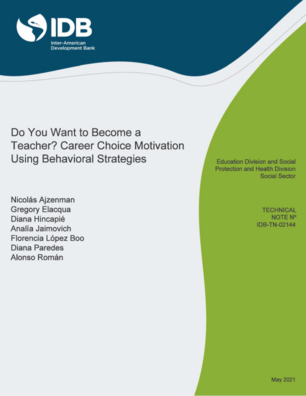Do You Want to Become a Teacher?: Career Choice Motivation Using Behavioral Strategies
Date
May 2021
Qualified teachers are a fundamental input for any education system. Yet, many countries struggle to attract highly skilled applicants to the teaching profession. This paper presents the results of a large-scale intervention to attract high performing high-school students into the teaching profession in Chile. The intervention was a three-arm email campaign which made salient three types of motivations typically associated with the teaching profession: intrinsic/altruistic, extrinsic, and prestige-related. The objective was to identify which type of message better appealed to high performing students to nudge them to choose a teaching major. The “intrinsic” and “prestige” arms reduced applications to teaching majors among high performers, while the “extrinsic” arm increased applications among low performers. A plausible interpretation could be that the “intrinsic” and “prestige” messages made more salient an issue that could otherwise be overlooked by high performing students (typically from more advantaged households), negatively impacting their program choice: that while the social value of the teaching profession has improved, it still lags behind other professions that are valued more by their families and social circles. In turn, the “extrinsic” arm made salient the recent improvements in the economic conditions of the teaching profession in Chile, thus appealing to low performing students who in general come from disadvantaged families and for whom monetary incentives are potentially more relevant. These results emphasize the importance of having a clear picture of the inherent motivations that could influence individuals career choice. Making salient certain types of motivations to the wrong target group could lead to undesired results..




